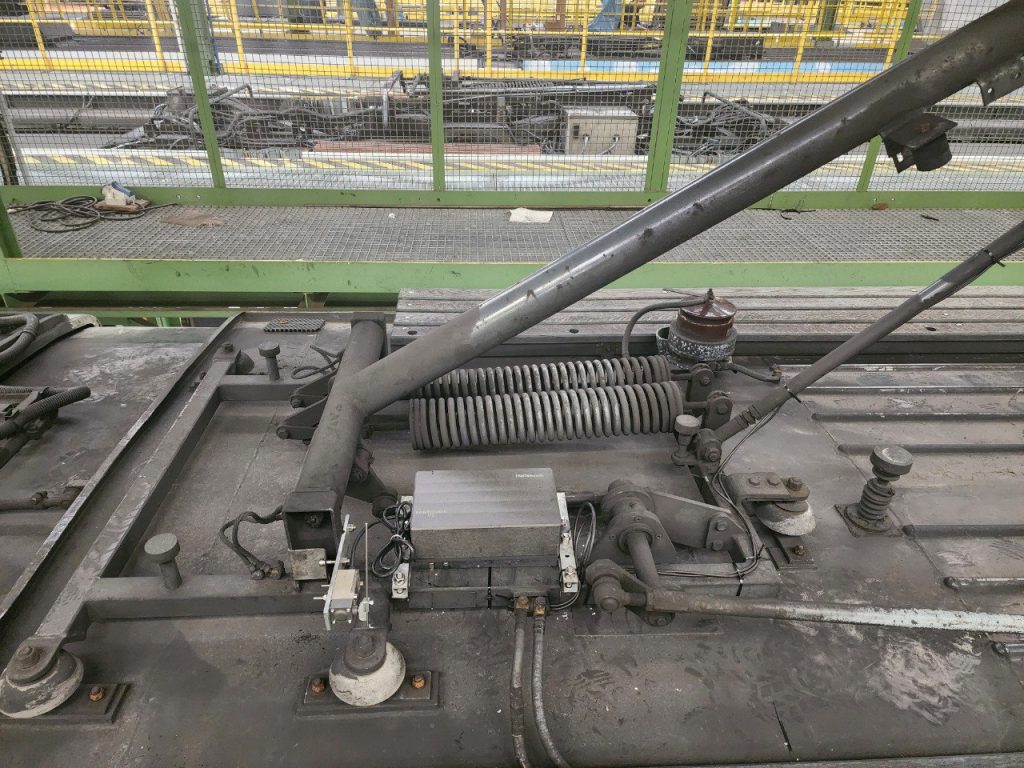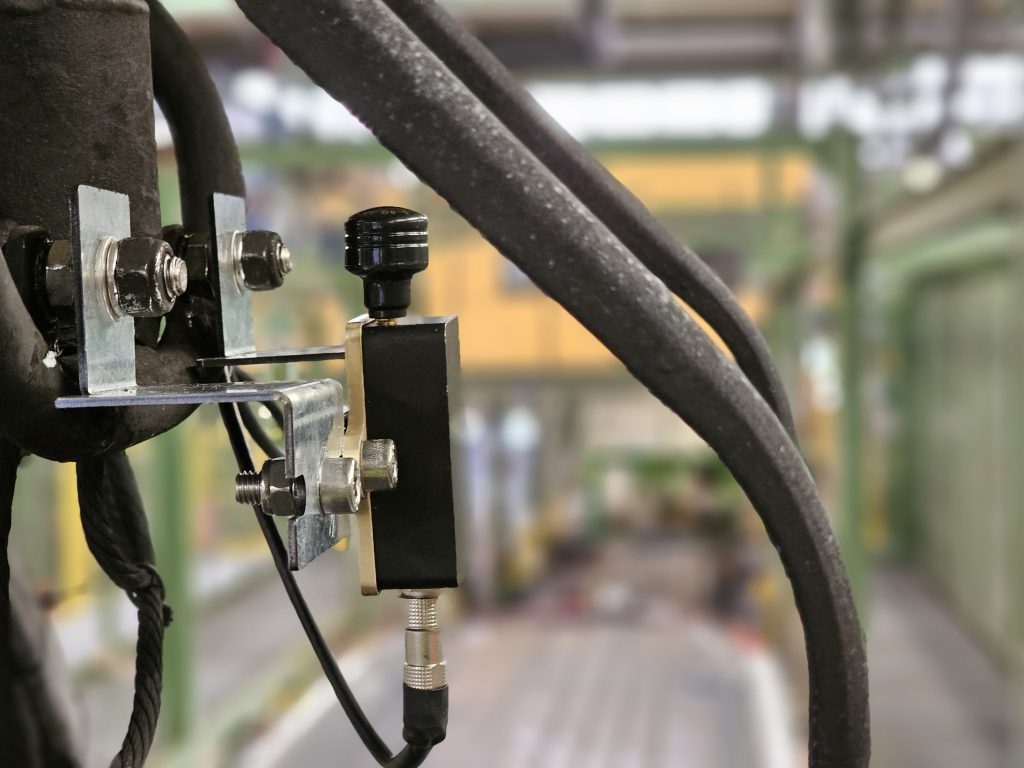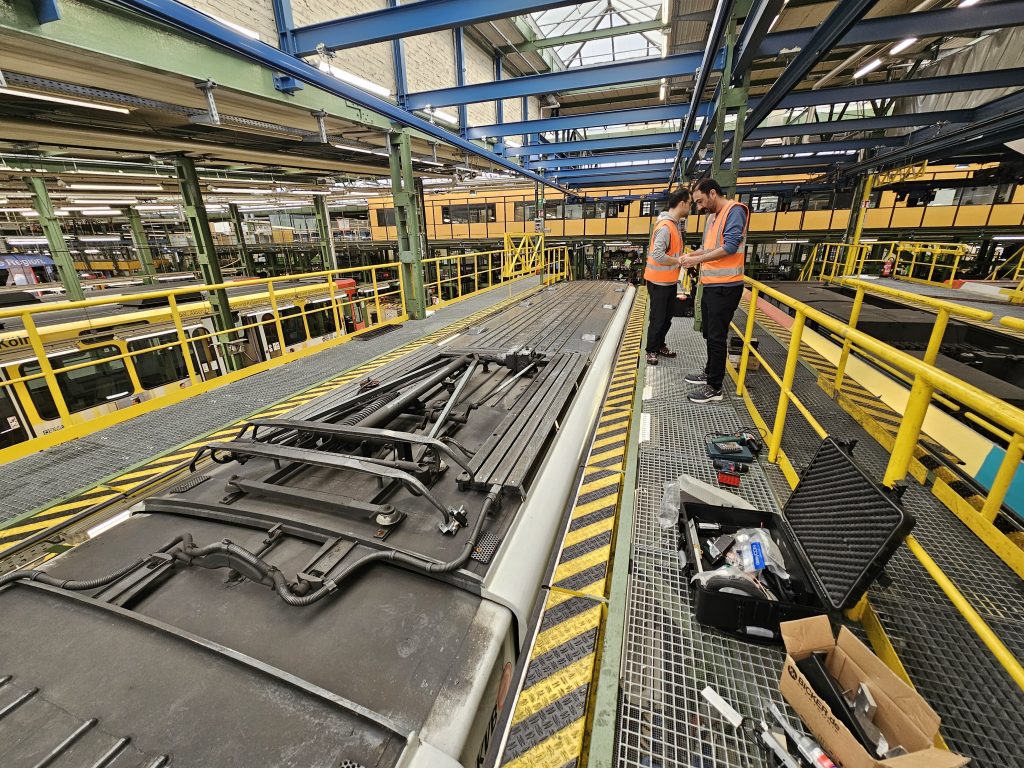PANTOhealth’s predictive railway maintenance for efficient and cost-saving operation
Pain point addressed:
Are Traditional Railway Maintenance Methods Slowing Down Your Operation?
The “Häfen und Güterverkehr Köln AG” (HGK) is a key player in Germany’s trimodal logistics and infrastructure management sector. Additionally, running Europe’s biggest inland water vessel fleets and owning several ports and terminals, HGK manages approximately 250 kilometers of electrified railway lines.
In this use case, we will explore HGK’s efforts to enhance its predictive railway maintenance optimization through more predictive railway maintenance strategies. So far, HGK is using conventional inspection approaches for maintenance, such as on-site and manual inspections of catenaries.
While established, these conventional methods present opportunities for improvement. HGK aims to accelerate problem detection and maintenance response times by eliminating these time-consuming practices. Hence, adopting advanced technologies, such as data-driven railway analytics and real-time OLE diagnostics, promises to improve efficiency, optimize maintenance costs, support operational reliability, and reduce railway downtime prevention.
With the rail industry experiencing a general shortage of skilled workers, modernizing maintenance practices through smart railway maintenance solutions can help reduce reliance on manual labor, streamline processes, and at the same time improve quality assurance. Through these advancements, HGK is positioning itself to meet future challenges more effectively and maintain high service standards.
Previous Client Approach:
Why It’s Time to Shift to predictive railway maintenance Solutions?

HGK’s previous railway maintenance optimization relied on skilled workers and service partners conducting manual inspections.
The inspections were thorough but labor-intensive and required extensive information analysis. HGK’s reactive maintenance approach ensured issues were resolved promptly but could benefit from a shift toward predictive railway maintenance.
By modernizing these traditional methods, HGK can better align with the rail industry’s evolving demands and enhance overall efficiency.
Our Solution:
Elevate Your predictive railway maintenance with PANTOhealth: A Data-Driven, Predictive Solution
To address HGK’s railway maintenance optimization goals, we introduce an innovative monitoring system for rail infrastructure maintenance. PANTOhealth’s solution uses real-time data collection and analysis to enable proactive maintenance strategies.
PANTOhealth implements state-of-the-art monitoring technology, including a contact wire profilometry system and vibration sensors, to continuously monitor the health of rail infrastructure. By transitioning from manual inspections to automated monitoring, HGK gains real-time insights into the condition of its rail infrastructure.

PANTOhealth system allows for early detection of issues, enabling HGK to address maintenance needs proactively before they escalate. Moreover, our predictive maintenance for railways capabilities leverage historical data and environmental factors to anticipate maintenance needs and plan interventions accordingly.
In addition to the monitoring technology, we provide a user-friendly platform for visualizing and analyzing collected data. The platform offers intuitive dashboards and analytics tools, empowering HGK personnel to make informed railway maintenance optimization decisions.
Results and Impact:
How PANTOhealth Is Lowering Downtime and Saving Costs for HGK With Predictive Railway Maintenance
Implementing PANTOhealth’s solution will help HGK develop more efficient maintenance operations. Our real-time monitoring system will enable HGK to detect issues promptly, substantially reducing maintenance downtime and operational disruptions.
By transitioning from reactive to proactive and predictive railway maintenance strategies, HGK will see a notable decrease in emergency repairs and unplanned downtime, resulting in improved operational reliability and cost savings. Furthermore, our solution will facilitate a shift towards smart railway maintenance, leveraging historical data and environmental factors to anticipate maintenance needs accurately.

This approach will allow HGK to plan maintenance activities more efficiently, reducing the overall maintenance backlog and optimizing resource allocation. As a result, HGK will experience improved asset performance and an extended asset lifespan, leading to long-term cost savings and enhanced operational efficiency.
Regarding crucial performance indicators (KPIs), HGK will observe improvements in several areas. Reducing maintenance downtime will increase rail network availability, improving service reliability and customer satisfaction.
Eventually, the decrease in emergency repairs and reactive maintenance activities will result in substantial cost savings for HGK. The shift toward predictive maintenance will also enable HGK to optimize its workforce utilization, mitigating the impact of the skilled labor shortage on operations.
Overall, PANTOhealth’s solution will positively impact HGK’s bottom line, operational efficiency, and safety. By leveraging advanced monitoring technology and data-driven insights, HGK will modernize its railway maintenance operations, improve asset reliability, and meet the evolving demands of the rail industry.
Implementing the PANTOhealth solution will help HGK position itself as a leader in rail infrastructure management, paving the way for future innovation and growth in the sector.
Follow PANTOhealth on LinkedIn for more updates and news about our projects.
